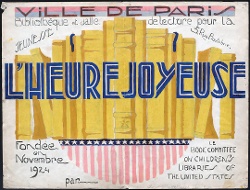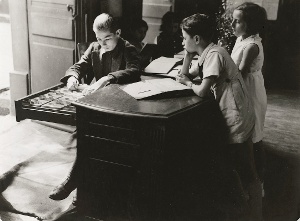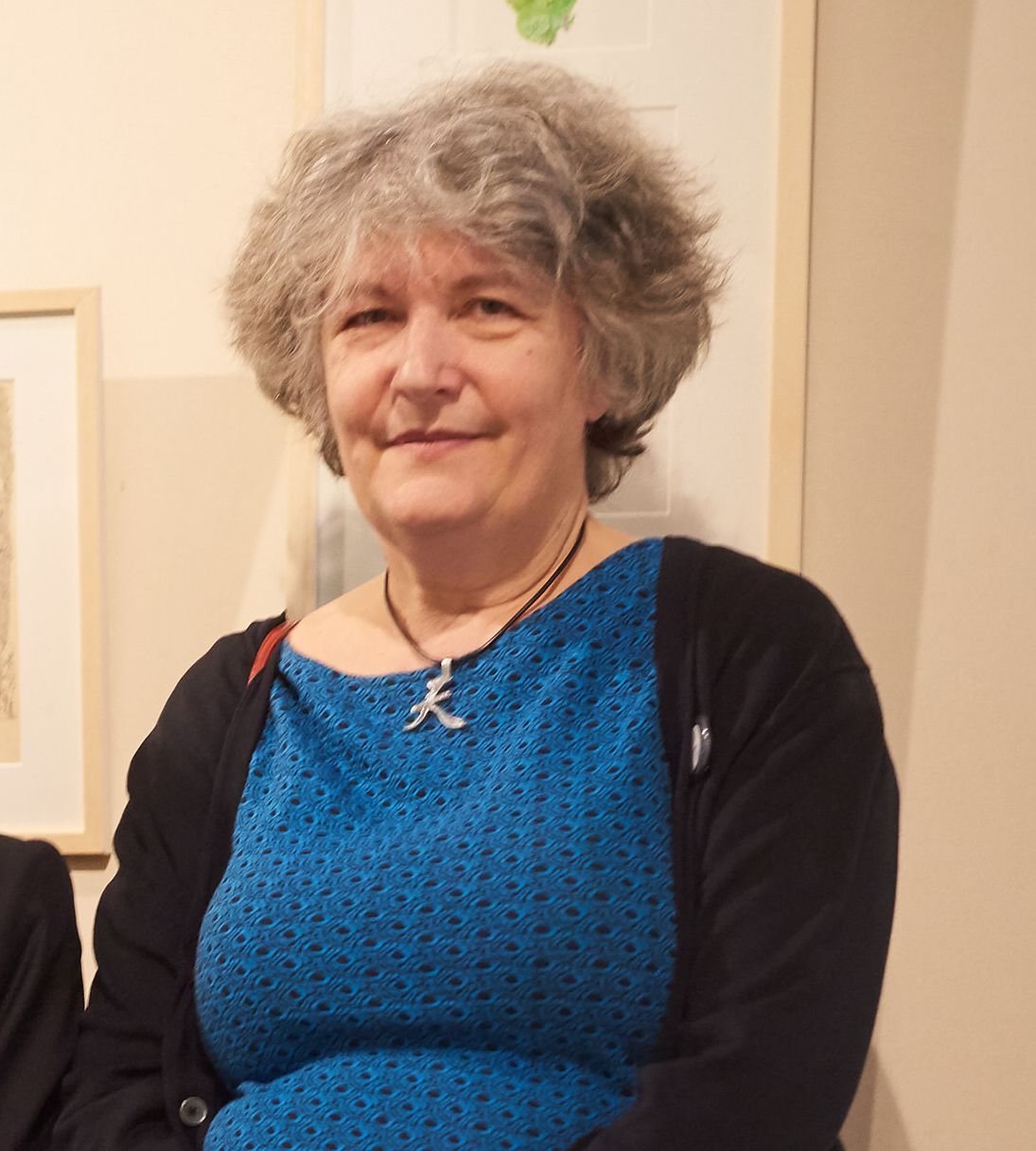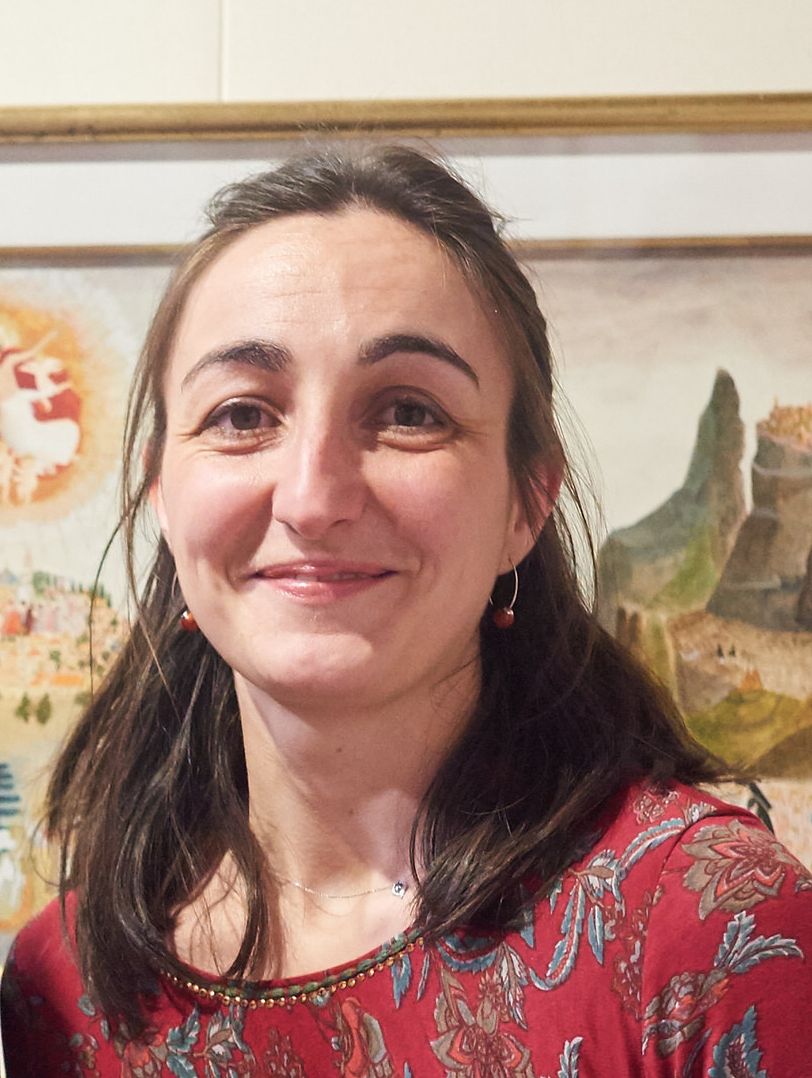L'Heure Joyeuse: The First Children's Library in France Turns 100
L’Heure Joyeuse was the first library in France devoted especially to children. It opened in the Latin Quarter of Paris in 1924, after the First World War, thanks to an American gift to the city. Heure Joyeuse translates literally as “Happy Hour,” which seems like an odd name for a children’s library. However, the phrase had an entirely different connotation in 1924 than it does today. It alludes to the necessity for a place that would restore joy in French children’s lives after four traumatic years of war.


Above and left: 1927 posters created for the library by illustrator Pierre Belvès when he was sixteen.
Images courtesy of Fonds patrimonial L'Heure Joyeuse, Médiathèque Françoise Sagan.
L’Heure Joyeuse was the first library in France devoted especially to children. It opened in the Latin Quarter of Paris in 1924, after the First World War, thanks to an American gift to the city. Heure Joyeuse translates literally as “Happy Hour,” which seems like an odd name for a children’s library. However, the phrase had an entirely different connotation in 1924 than it does today. It alludes to the necessity for a place that would restore joy in French children’s lives after four traumatic years of war.
Before World War I, children in France had limited access to books written for their age level. Schools were poorly equipped to meet their reading needs, and most libraries only served academic scholars. These spaces were often called “book cemeteries,” because the books were covered in black dust jackets and were kept in cupboards or stored on shelves under lock and key. Only a few public libraries offered small collections for children, usually hidden in a back corner. This contrasted significantly with English and American libraries, which offered open access to books and were beginning to feature dedicated children’s departments with collections especially curated for young readers. Eugène Morel, a progressive French librarian and writer, visited some of these anglophone libraries and began advocating for change. In his essay “La Librairie publique,” he pleaded for free French public libraries and children’s libraries based on the American model.
After the war, a number of American philanthropic organizations assisted in the rebuilding of France. One group that had a profound impact was the American Committee for Devastated France (CARD), founded by Dr. Anne Murray Dike and heiress Anne Morgan. The group’s relief work, carried out in the north of France, included the creation of libraries with children’s departments. Jessie Carson, a children’s librarian from the New York Public Library, headed up this endeavor. In addition to five libraries in the north, CARD also established the first modern public library in Paris. Founded in 1922, the Fessart Library included a dedicated children’s section.
CARD was not the only organization that believed in the power of books. The day after the November 1918 armistice, a group of American women formed the Book Committee on Children’s Libraries. Their goal was to provide books to European children so they might heal from the trauma of war and prepare themselves for a peaceful future. The Book Committee helped Paris and Brussels finance a free municipal library for children in each city. L’Heure Joyeuse, the children’s library in Paris, opened its doors on November 12, 1924.
The first Heure Joyeuse librarians, Claire Huchet Bishop, Marguerite Gruny, and Mathilde Leriche, were true pioneers in their field. They experimented with innovative librarianship principles and practices, many of which are still in use today.
The original idea behind the creation of L’Heure Joyeuse was to bring children and books together outside of school in a homey, attractive setting. Consequently, the founders hung pictures on the walls and placed flowers on the tables. Custom-made, child-sized wooden furniture was ordered from the United States.
Another goal was to serve children of all ages and social backgrounds. Accordingly, the founders selected a location on rue Boutebrie, then a socioeconomically diverse neighborhood in the center of Paris with families from many different countries and religions. The library provided services to boys and girls, which amounted to no less than a revolutionary act in the 1920s.


Above left: the first librarians at L'Heure Joyeuse. L to R: Marguerite Gruny, Claire Huchet Bishop, and Mathilde Leriche.
Above right: a young library helper assists patrons, circa 1936.
Photos courtesy of Fonds patrimonial L'Heure Joyeuse, Médiathèque Françoise Sagan.
Librarians at L’Heure Joyeuse used various strategies to help children become strong readers. One was story hour, a practice imported from the United States, which also introduced children to foreign literature in translation. The founding librarians were excellent storytellers. Even before the library’s building was inaugurated, Huchet Bishop, later author of The Man Who Lost His Head (illustrated by Robert McCloskey), French Children’s Books for English-Speaking Children, and many others, was holding storytelling sessions at other venues including public gardens.
L’Heure Joyeuse embodied innovation in all matters related to recreational reading. Inspired by educational reformers such as Roger Cousinet, Maria Montessori, Ovide Decroly, and Célestin Freinet, who introduced “active learning” methodologies, librarians encouraged children to make the space “their own.” Children aged six to sixteen were given responsibilities. These included becoming library helpers, checking out books, assisting younger children, and organizing events. Every month, older readers elected two leaders, one boy and one girl. The heads made decisions regarding life at the library, including discipline. This autonomy and freedom alarmed some of the more conventional members of the Book Committee but was very appreciated by the children.
The librarians believed that children’s books should be chosen with even greater care than books for adults. Therefore, they needed to define new literary and aesthetic criteria to ensure a high-quality collection. Huchet Bishop, Gruny, and Leriche read and evaluated each potential book before deciding whether or not to keep it in the collection. When they struggled to find enough interesting books for beginning readers, they even created their own. The librarians also developed other creative activities based on active learning. Children engaged in theatrical productions, wrote articles for the library’s gazette “L’Heure Joyeuse,” then “Le Rat Joyeux,” and organized exhibitions on a variety of subjects of their own choosing. All activities involved using the library’s different collections and were designed to create interest among reluctant readers.
The founding librarians thought all children should be able to read hard-to-access books, be they out of print or too expensive for their parents to buy, such as the beautiful Hetzel collection of Jules Verne novels or works illustrated by Arthur Rackham. Therefore, they began acquiring rare books children could consult at the library but could not check out to take home. The historic titles that were part of the original collection remain available to young readers today in a patrimonial collection with more than one hundred thousand children’s books dating back to the sixteenth century.
The Book Committee had chosen the central location in Paris for L’Heure Joyeuse to give it visibility and to attract visitors. Their plan worked. Many professionals and scholars specializing in childhood learning and librarianship frequented the library. Over the years, the library hosted a number of well-known authors and illustrators (including Jean de Brunhoff, the creator of Babar) and publishers. Paul Faucher, editor of the Père Castor collection, tested his first picture books on readers at L’Heure Joyeuse in 1929. It was here he discovered Pierre Belvès, a talented sixteen-year-old who became a professional illustrator. L’Heure Joyeuse also inspired the establishment of other children’s libraries in France using the same organization, principles, and practices, even though these did not become commonplace in France until the 1970s.
 |
| Médiathèque Françoise Sagan, Paris, 2022. Photo courtesy of Direction de la Communication de la Ville de Paris. |
In 1974, L’Heure Joyeuse moved down the street to a more spacious location at 6 rue des Prêtres-Saint-Séverin. Two new sections were also created: a large vinyl record collection (now CDs) and the aforementioned historical collection. In 2015, the historical collection of books, ephemera, and archives was transferred to the Médiathèque Françoise Sagan, a completely renovated building that traces its origins to the nineteenth century (although this facility is a large public library, it is no longer exclusively for children).
An exhibition that recounts the story of L’Heure Joyeuse to audiences both young and old will be staged at the Médiathèque Françoise Sagan from November 12, 2024, to March 23, 2025. Items from the historical collection, archival photographs and documents, and artifacts, including some of the library’s original furniture, will be on display in an exhibit space designed by renowned illustrators Serge Bloch and Gérard Lo Monaco. Public events, including story hours, will also be held. The Fonds patrimonial Heure Joyeuse and the University of Sorbonne Paris Nord will host an international conference on “children’s literature, libraries, and international understanding” in March 2025 to conclude the celebrations.
In 1924, the founders of L’Heure Joyeuse believed that books and libraries could help children to deal with a traumatized world in reconstruction. We hope — and believe — it is still a place where young minds can arise to such values as tolerance, liberty, and self-construction, and to promote knowledge and imagination through children’s literature.
From the November/December 2024 issue of The Horn Book Magazine.


RELATED
ALREADY A SUBSCRIBER? LOG IN
We are currently offering this content for free. Sign up now to activate your personal profile, where you can save articles for future viewing.







Add Comment :-
Be the first reader to comment.
Comment Policy:
Comment should not be empty !!!